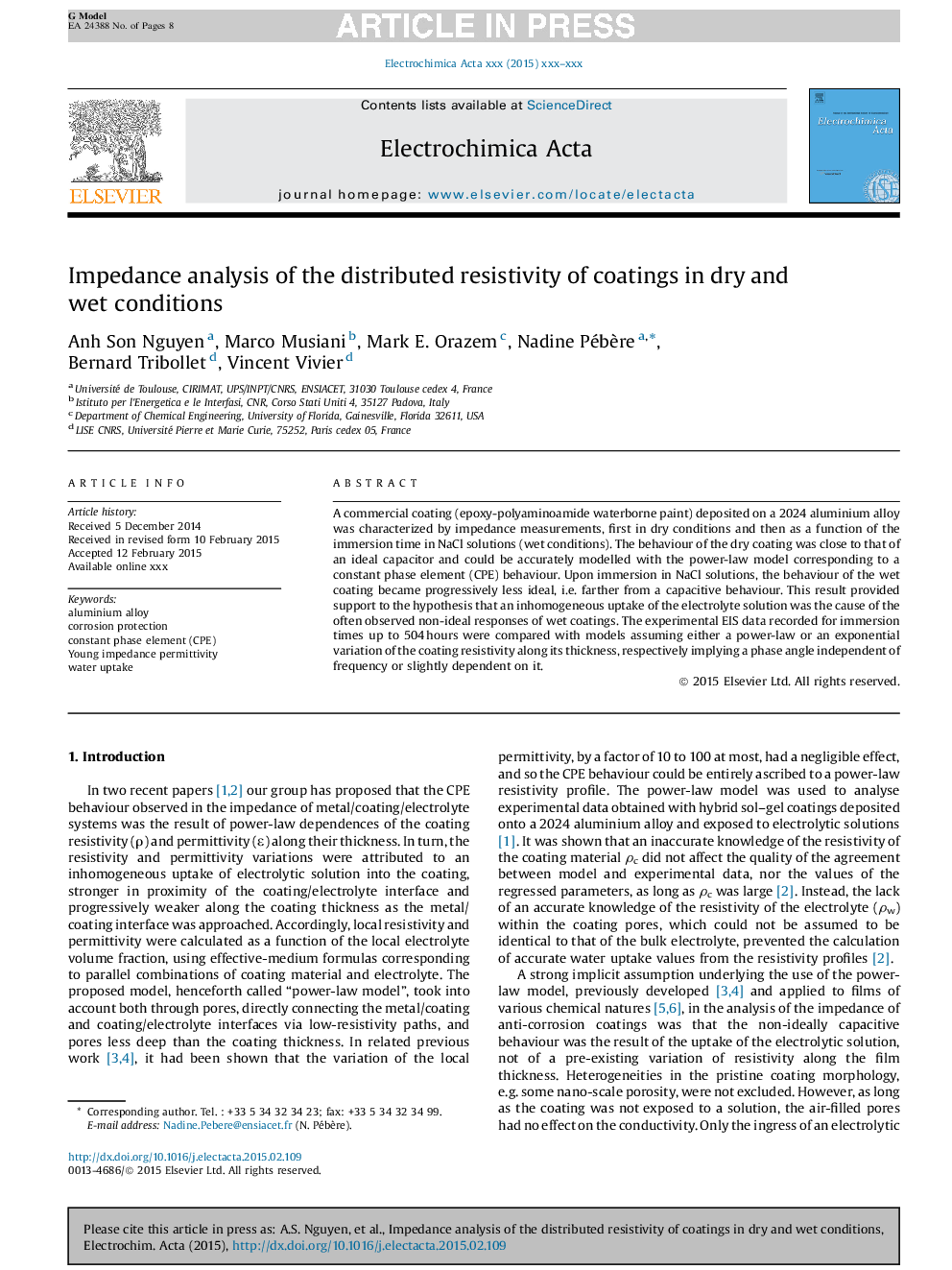| Article ID | Journal | Published Year | Pages | File Type |
|---|---|---|---|---|
| 6610713 | Electrochimica Acta | 2015 | 8 Pages |
Abstract
A commercial coating (epoxy-polyaminoamide waterborne paint) deposited on a 2024 aluminium alloy was characterized by impedance measurements, first in dry conditions and then as a function of the immersion time in NaCl solutions (wet conditions). The behaviour of the dry coating was close to that of an ideal capacitor and could be accurately modelled with the power-law model corresponding to a constant phase element (CPE) behaviour. Upon immersion in NaCl solutions, the behaviour of the wet coating became progressively less ideal, i.e. farther from a capacitive behaviour. This result provided support to the hypothesis that an inhomogeneous uptake of the electrolyte solution was the cause of the often observed non-ideal responses of wet coatings. The experimental EIS data recorded for immersion times up to 504Â hours were compared with models assuming either a power-law or an exponential variation of the coating resistivity along its thickness, respectively implying a phase angle independent of frequency or slightly dependent on it.
Related Topics
Physical Sciences and Engineering
Chemical Engineering
Chemical Engineering (General)
Authors
Anh Son Nguyen, Marco Musiani, Mark E. Orazem, Nadine Pébère, Bernard Tribollet, Vincent Vivier,
